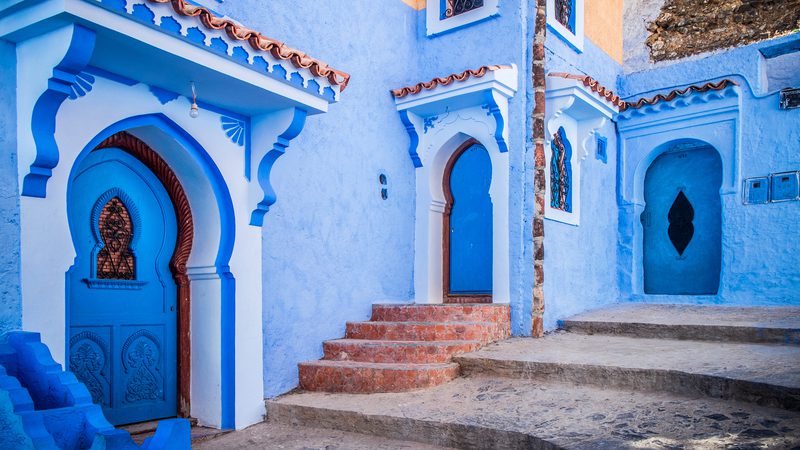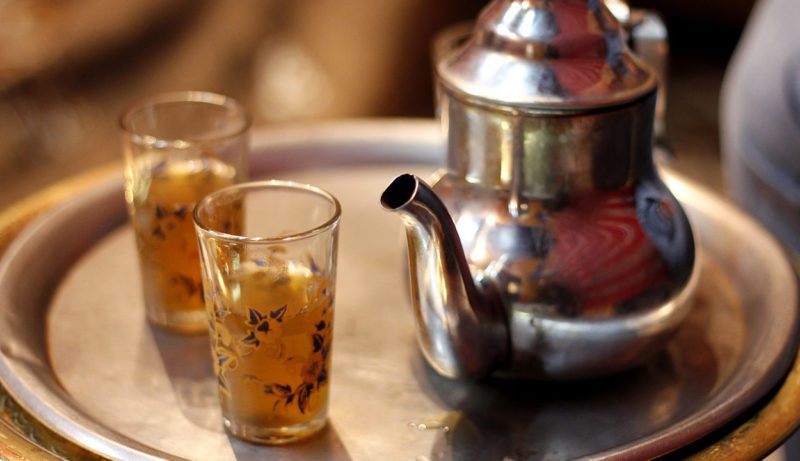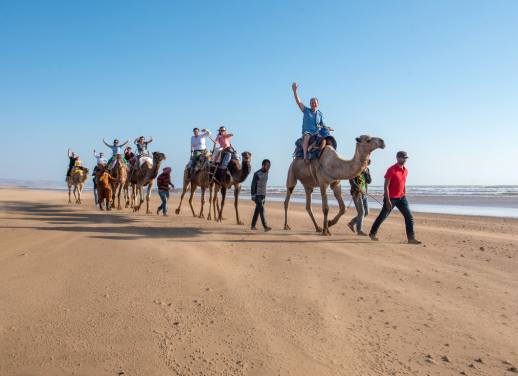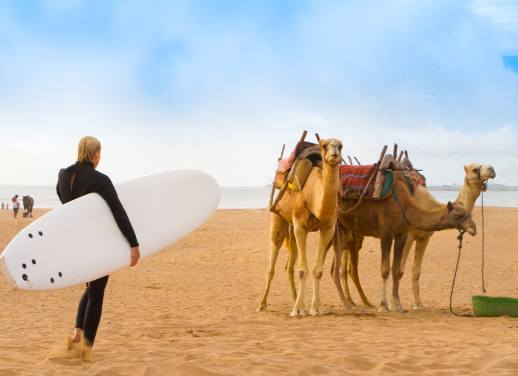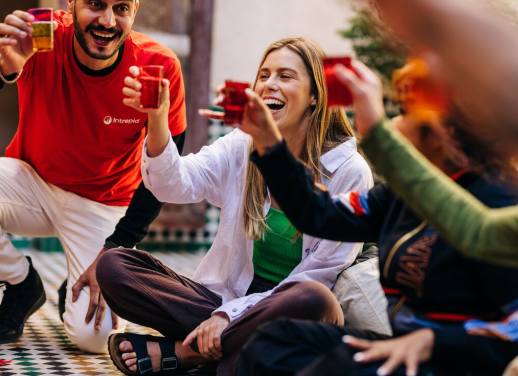The first thing you’ll notice about arriving in Chefchaouen is the relative peace and quiet.
Arrive by rickety bus into any other Moroccan city and you’re surrounded by eager vendors, taxi drivers and hotel owners within seconds. They’re noisily clamoring for your sale, and as a result, it’s hard to emerge from any sort of journey without feeling overheated, overtired and remarkably unvacation-like. But, after a lengthy drive through the winding roads of northern Morocco’s Rif Mountains, you’ll find that Chefchaouen is an exception to this rule.
This paradisaical place comes with a spellbinding sense of calm, and so much more…
 50 shades of blue
50 shades of blue
The entirety of the small city is painted in vivid shades of blue, and, really, it has to be seen to be believed (because yes, it’s even more dazzling than Instagram makes it appear).
Founded in 1471, the tradition of painting the buildings stems from the Jewish community who settled there in the 15th century after being expelled from Spain. Back then, it was believed that weaving dyed blue thread into prayer shawls would remind people of God’s power.
Nowadays, the city is inhabited by the Berber people and Muslims – in addition to descendants of the original Jews – all of whom live in picturesque harmony.
Regularly repainted, the walled city stands out proudly amongst the plethora of tan-colored towns and mountains around it. ( The most charming locale nearby? The whitewashed town of Tetouan which is even less touched by tourism, and home to a UNESCO-approved ancient medina and acclaimed archaeological museum.)
But when it comes to Chefchaouen, it really is no exaggeration to say that every street and alleyway is majestic. Wandering through them, you’ll find that taking a bad photo or forgetting to feel in awe is an impossibility.
 Authentic Morocco
Authentic Morocco
So, what do you need to know about the city? First off, it’s pretty remote – the biggest cities nearby, Tangier and Fez, take two and four hours, respectively, to get to. This means it’s often skipped by travelers who focus on ticking off Marrakech and the Sahara – two (justified) bucket list items. It is growing in popularity, however, meaning the best time to visit is as soon as humanely possible… (While you’re at it check out another hidden gem: laid-back, coastal Essaouira.)
Back to Chaouen (yep, that’s what the locals call it). Part of its abundant charm lies in the quaint medina. By no means Morocco’s largest, the vendors and crammed antique shops still sell everything from woven blankets to brass teapots to leather goods.
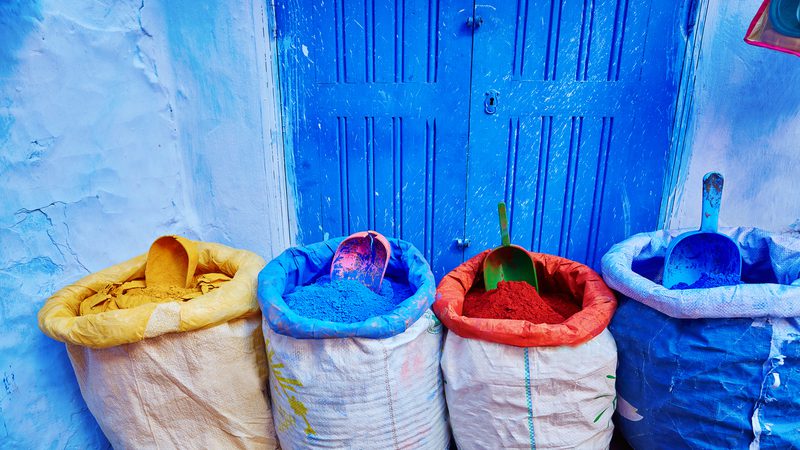 And the entire old town is completely car-free and surprisingly easy to navigate. Some other sizable Moroccan towns are stressful and shrill, humid and hot. Chefchaouen, in contrast, offers the freshest mountain air, the purest spring water and a beauty and pace more comparable to the Greek Islands than that of North Africa.
And the entire old town is completely car-free and surprisingly easy to navigate. Some other sizable Moroccan towns are stressful and shrill, humid and hot. Chefchaouen, in contrast, offers the freshest mountain air, the purest spring water and a beauty and pace more comparable to the Greek Islands than that of North Africa.
RELATED: VISIT CHEFCHAOUEN ON THIS 9-DAY SMALL GROUP TOUR IN MOROCCO
Its authenticity is also evident in its cuisine. It really is tagine or tagine here – Morocco at its most Moroccan, no hint of the diverse cuisine of more cosmopolitan hubs. Thankfully, any slow-cooked North African stew you go for will be delectable.
Our favorites? Restaurant Tissemlal, where you should pick the lamb and chicken, or Bab Ssour, which boasts both veggie options and a panoramic view. For authentic (and verging-on-legendary) couscous, head to Restaurant Aladdin. As the name suggests, the decor is enchanting and romantic, all dim lights and pretty cushions. Finish off any meal with some sweet mint tea (you’ll find it all over), and you’ll be one happy traveler.
 Beauty on steroids
Beauty on steroids
So, we’ve given you food for thought, but because we’re nice, we’ll give you some more must-dos. The short hike to the nearby Spanish Mosque is a perfect first-day activity to get to grips with the splendor of the landscape. From here, you can look out over the mountains and town, providing the definition of a can’t-believe-this-is-real-life moment.
SUBSCRIBE TO OUR NEWSLETTER FOR TRAVEL INSPO, GIVEAWAYS, COMPETITIONS & MORE
The mosque itself – built by the Spanish in the 1920s, and recently restored by them – is not the star of the show. But the walk (30 minutes uphill from the eastern medina gate) and subsequent view, really is. Insider tip: for even more awe-inspiring views, go during sunrise or sunset.
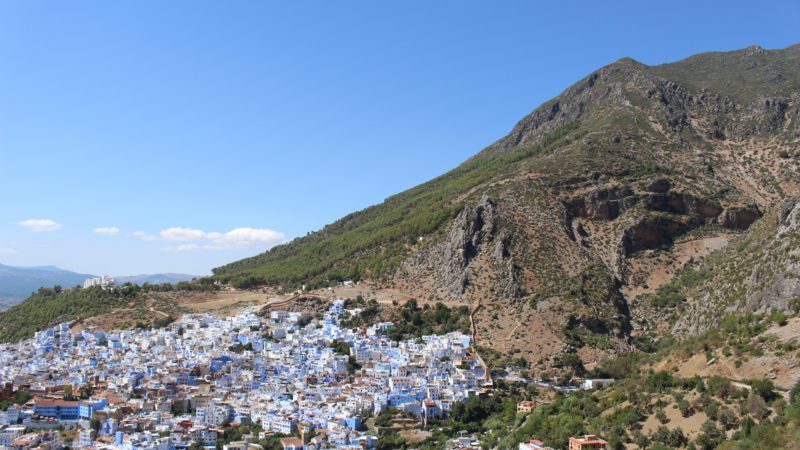 For those who have spent enough energy (and Dirham) haggling at the medina, the endless natural attractions sure don’t disappoint. Talassemtane National Park is on the city’s doorstep. Originally established to conserve the last of Morocco’s threatened fir forests, it’s now a hiker’s paradise and perfect day trip – especially if you make it to ‘God’s Bridge’, a natural stone arch 25 meters above the river.
For those who have spent enough energy (and Dirham) haggling at the medina, the endless natural attractions sure don’t disappoint. Talassemtane National Park is on the city’s doorstep. Originally established to conserve the last of Morocco’s threatened fir forests, it’s now a hiker’s paradise and perfect day trip – especially if you make it to ‘God’s Bridge’, a natural stone arch 25 meters above the river.
Also worth an explore are the gorgeous waterfalls under an hour away, Cascades d’Akchour, and the deepest cave in Morocco, Kef Toghobeit.
RELATED: 10 EXPERIENCES EVERY TRAVELER SHOULD HAVE IN MOROCCO
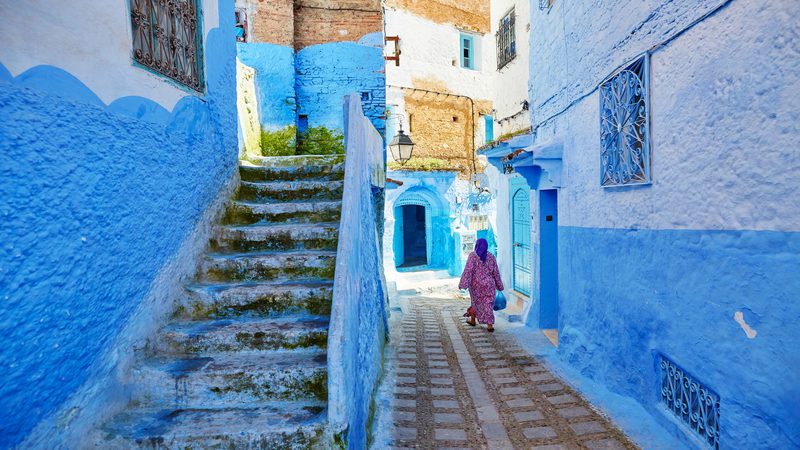 And if simply reading the above makes you feel exhausted, a hammam visit will be right up your (blue) street. The quintessential Moroccan steam room session really is quite the experience… For a glamorous iteration of it head to Lina Ryad & Spa for their hour-long Moroccan scrub down (plus oriental baths and dreamy pool). And for what to expect, check out our must-read guide.
And if simply reading the above makes you feel exhausted, a hammam visit will be right up your (blue) street. The quintessential Moroccan steam room session really is quite the experience… For a glamorous iteration of it head to Lina Ryad & Spa for their hour-long Moroccan scrub down (plus oriental baths and dreamy pool). And for what to expect, check out our must-read guide.
When you’re done, you’ll feel all kinds of relaxed – the spa treatment and Chefchaouen’s general vibe tend to have that effect. And therein lies the charm of Morocco’s sapphire-tinged mountain city you won’t forget.
Ready to see the beauty of Chefchaouen with your own eyes? Check out this 9-day North Morocco Adventure.
—
Image Credits: Intrepid Travel x3, iStock, Rebecca Shapiro, Intrepid Travel

